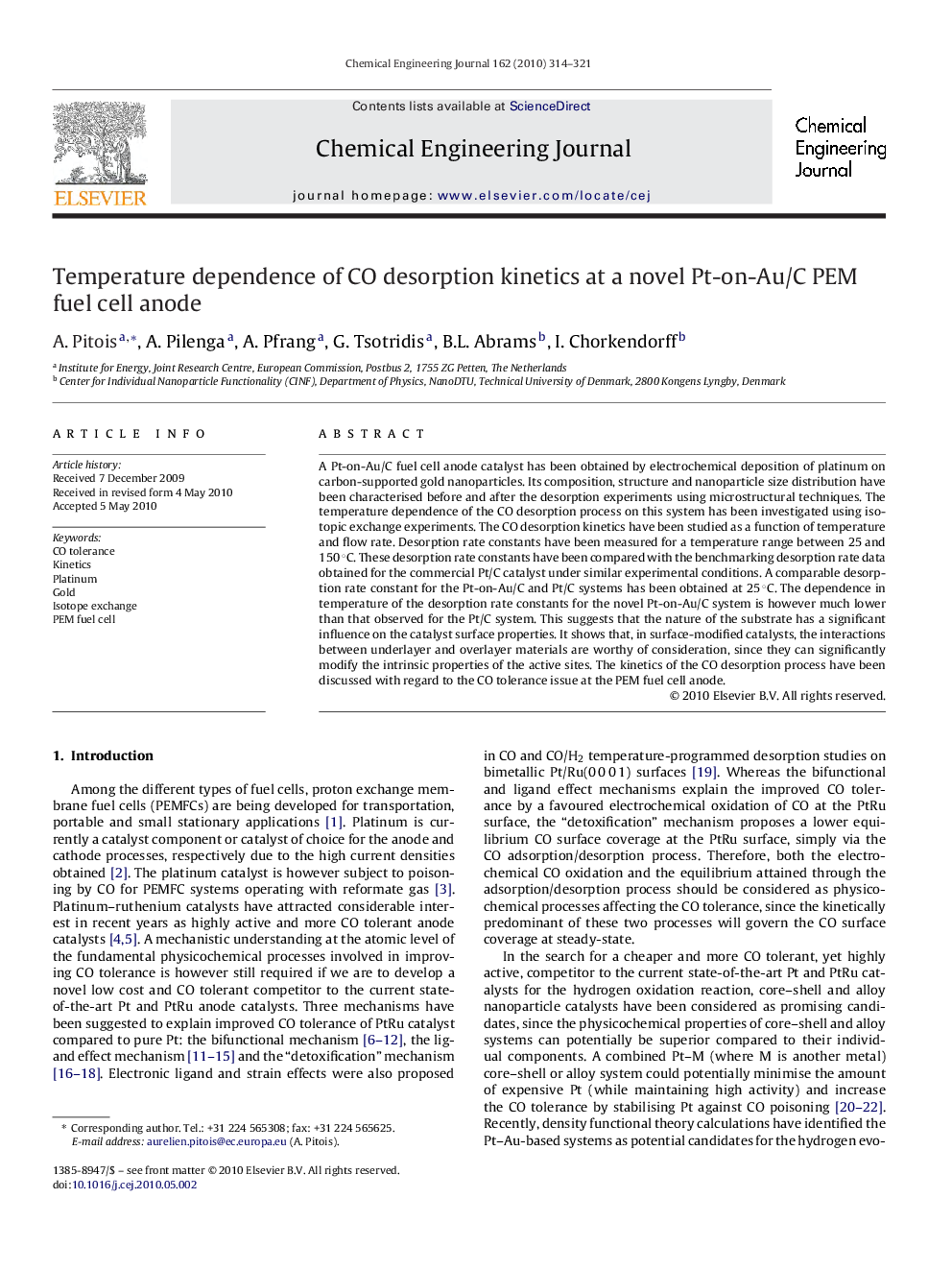| Article ID | Journal | Published Year | Pages | File Type |
|---|---|---|---|---|
| 152435 | Chemical Engineering Journal | 2010 | 8 Pages |
A Pt-on-Au/C fuel cell anode catalyst has been obtained by electrochemical deposition of platinum on carbon-supported gold nanoparticles. Its composition, structure and nanoparticle size distribution have been characterised before and after the desorption experiments using microstructural techniques. The temperature dependence of the CO desorption process on this system has been investigated using isotopic exchange experiments. The CO desorption kinetics have been studied as a function of temperature and flow rate. Desorption rate constants have been measured for a temperature range between 25 and 150 °C. These desorption rate constants have been compared with the benchmarking desorption rate data obtained for the commercial Pt/C catalyst under similar experimental conditions. A comparable desorption rate constant for the Pt-on-Au/C and Pt/C systems has been obtained at 25 °C. The dependence in temperature of the desorption rate constants for the novel Pt-on-Au/C system is however much lower than that observed for the Pt/C system. This suggests that the nature of the substrate has a significant influence on the catalyst surface properties. It shows that, in surface-modified catalysts, the interactions between underlayer and overlayer materials are worthy of consideration, since they can significantly modify the intrinsic properties of the active sites. The kinetics of the CO desorption process have been discussed with regard to the CO tolerance issue at the PEM fuel cell anode.
